Beautifully seasoned, crispy on the surface and fluffy inside, this leavened scallion flatbread only takes 10 mins to cook in a pan.
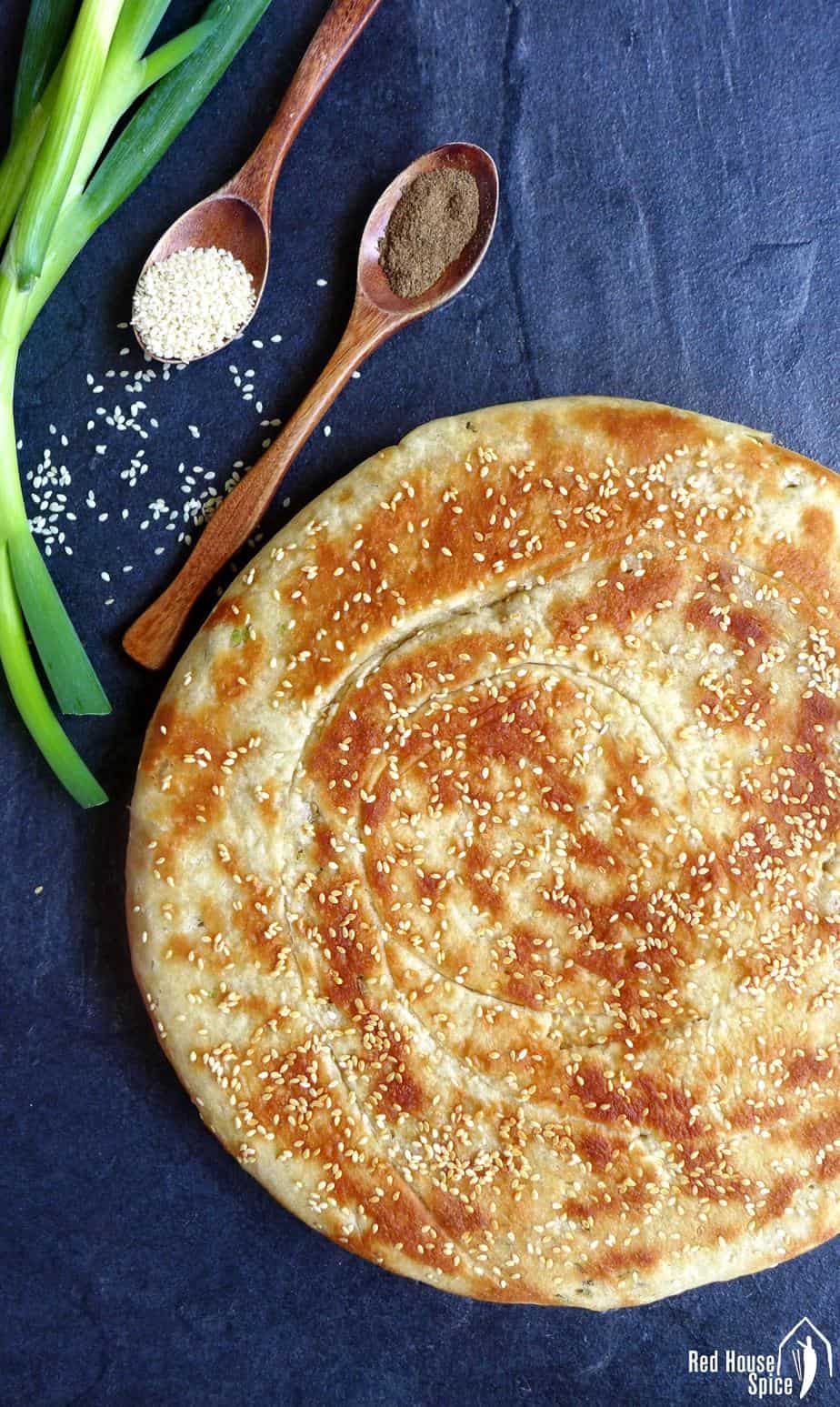
“Mum’s best” flatbread
Traditionally, in the North-west of China where I was born, wheat-flour based food is a dominant staple. My parents used to buy big bags of flour (25 kg each package) and make all types of noodles, buns and bread from scratch.
One of my favourite staples back then was “mum’s best” flatbread (Lao Bing, 烙饼). Based on what I learnt from my mum, I created a recipe with a few twists of my own. Now my pan-fried scallion flatbread (葱油发面饼) made from leavened dough has become my own children’s “mum’s best”.
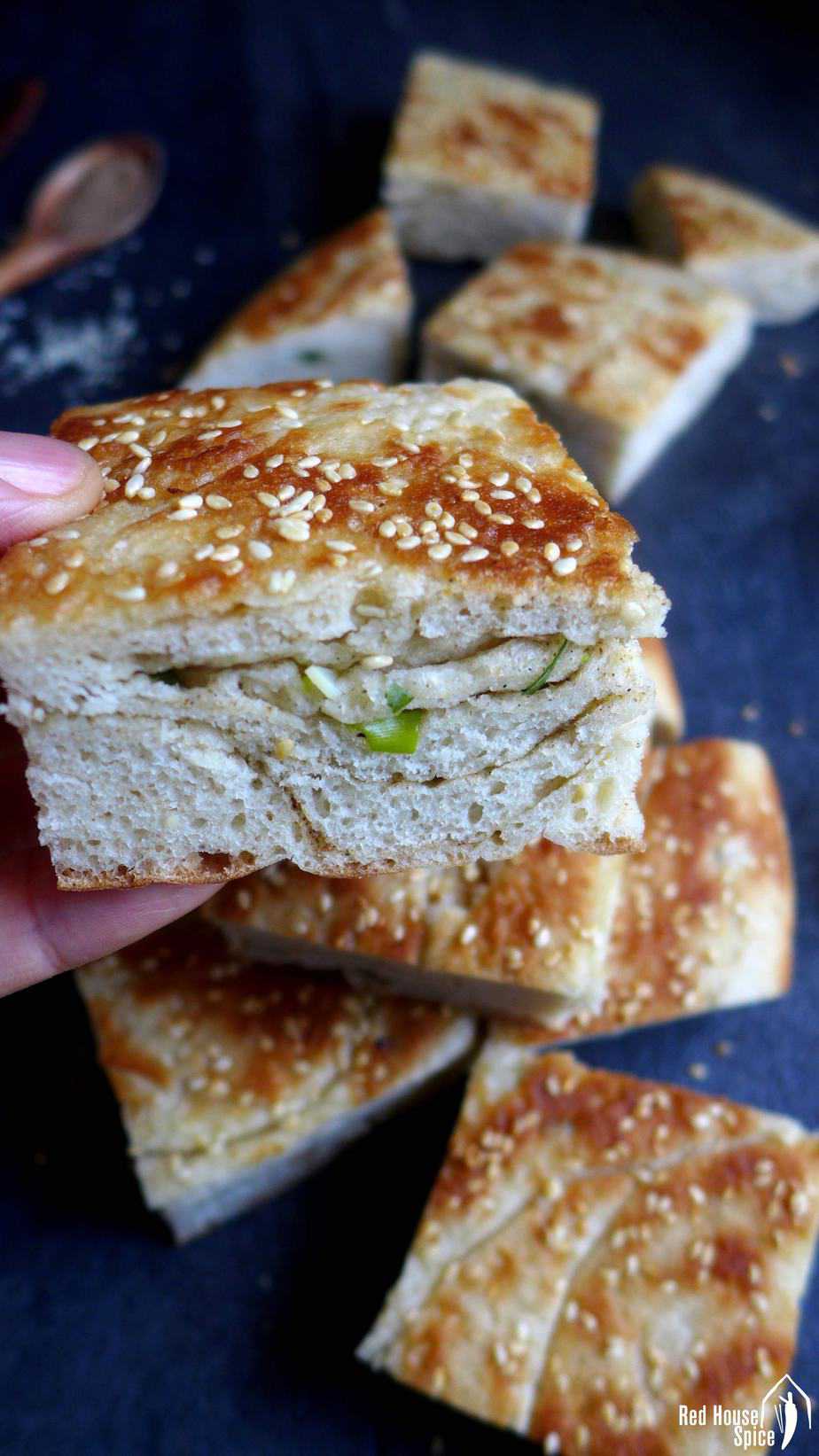
Leave adequate time for the dough to rise
Chinese kitchens are not usually equipped with ovens. Home cooks make bread either by steaming or by cooking in a pan/wok. There are two types of Chinese pan-baked flatbread: unleavened ones such as Spiced beef flatbread and Peking duck pancake; leavened ones like the scallion flatbread I’m sharing today.
Same as preparing other leavened bread, the key is to leave adequate time for the dough to rise properly. The rising process takes place in two stages: one after you form the dough; the other after you shape the bread. The well-developed dough will result in a fluffy and soft texture inside the finished bread.
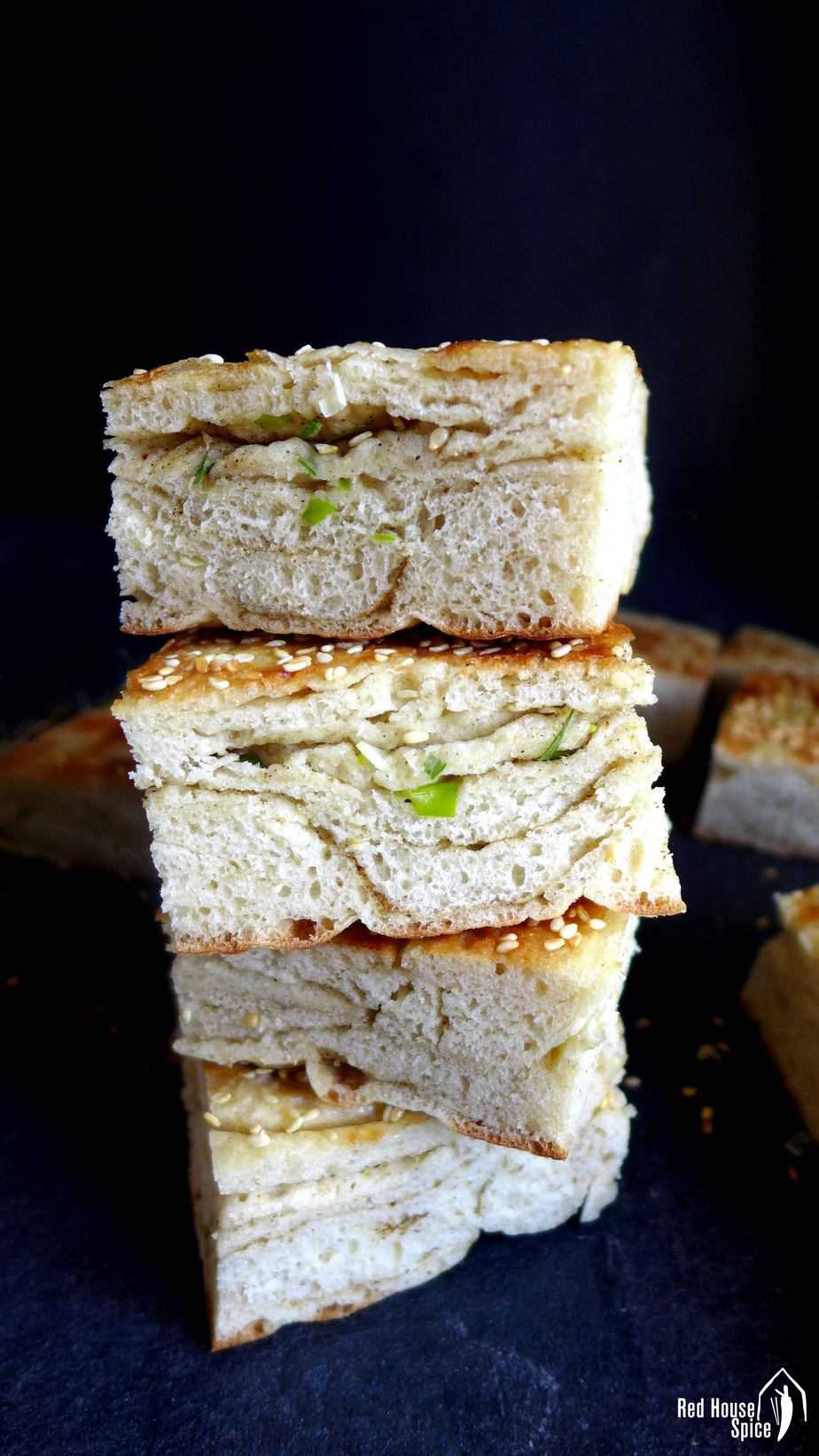
Speed up the proofing process
It takes about 40 minutes to 1.5 hours to double the dough in size during the first rising stage (depending on the room temperature). Recently I learnt from food blogger Nagi (Recipetin Eats) an unusual but very effective way to speed up the process: run an empty tumble dryer for 2 minutes, then place the bowl (dough in, covered with wet kitchen towel) inside the drum. I tested this method the other day: 40 minutes, job done!
Make it tasty & crispy
The flatbread my mum used to make was cooked in a pan without any oil. It wasn’t seasoned with any flavour neither. I like its natural taste which has a slight hint of sweetness. Inspired by a classic street food called Scallion Pancake (葱油饼, Cong You Bing) which is made from unleavened dough, I added a few elements to my mum’s recipe.


- Season the flatbread with spring onion, ground Sichuan pepper (or Chinese five-spice powder) and salt. Be generous with the spring onion. It’s the soul of the flavour.
- Roll, fold and coil the dough in a particular way. This gives the finished bread a layered look.
- Top the flatbread with sesame seeds for its nutty aroma.
- Then fry it with a little oil to create a tasty, crispy crust.
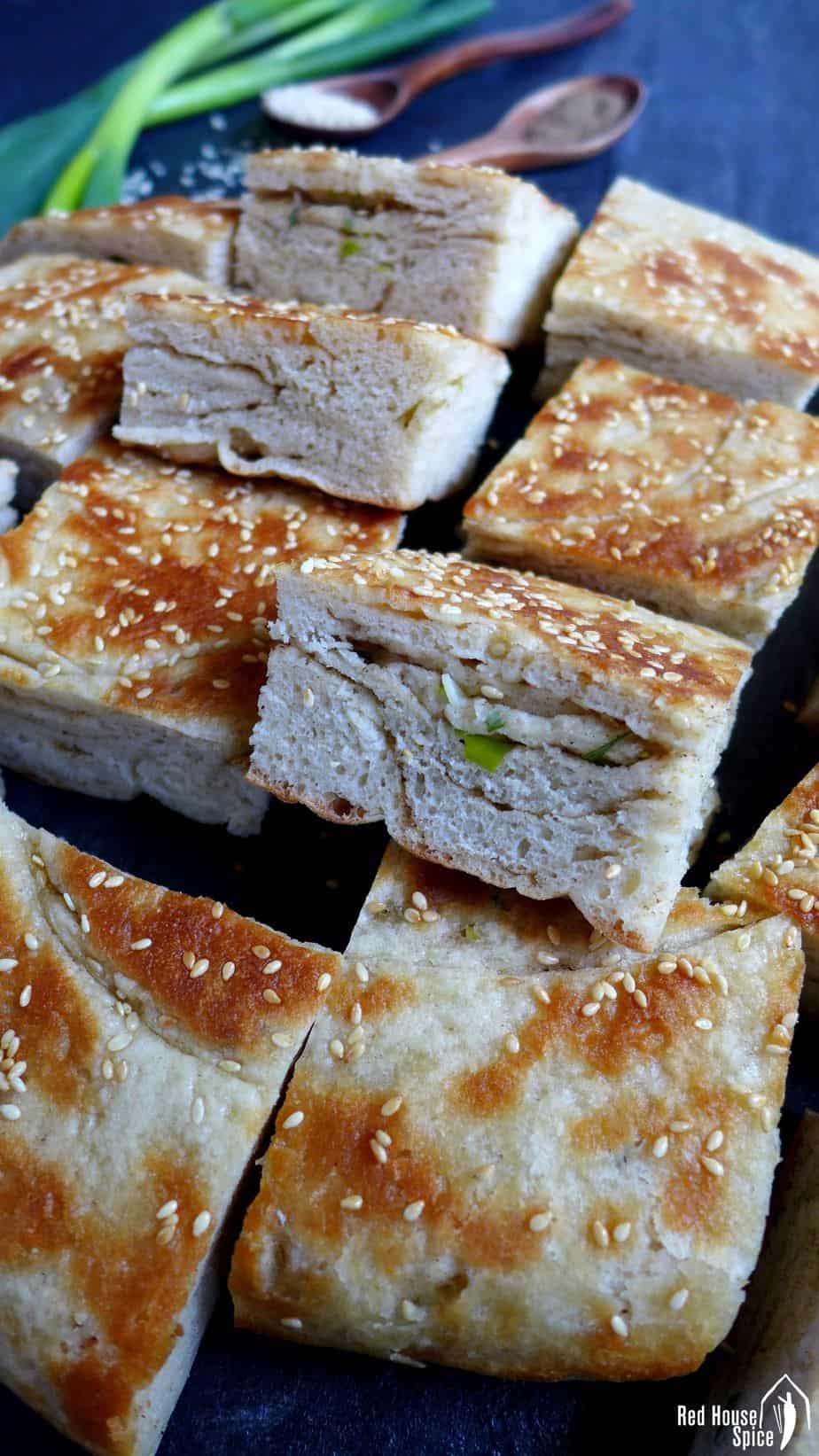
I often serve this pan-fried scallion flatbread for dinner, along with Chinese congee and other savoury dishes. It tastes best when freshly cooked. I also like it cold as a snack.
Other staples to try
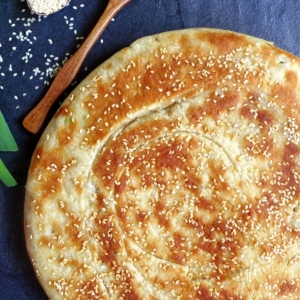
Scallion flatbread, leavened (葱油发面饼)
Ingredients
For the dough
- 500 g plain flour - 4 cups (see note 1 & 2)
- 2 teaspoon sugar
- 2 teaspoon dried instant yeast - see note 3
- 260 ml lukewarm water - 1 cup + 2 tbsp
For the bread
- 1 tablespoon cooking oil
- 1 teaspoon ground Sichuan pepper - or Chinese five-spice powder
- ⅛ teaspoon salt - or to taste
- 2 stalk scallions - finely chopped
- 1 tablespoon sesame seeds
For frying
- 1 tablespoon cooking oil
Instructions
Make the dough
- In a large bowl, mix flour, yeast and sugar. Pour in water little by little while stirring with a pair of chopsticks (or a fork). Knead with your hand until a smooth, elastic dough forms (see note 4)
The first rise
- Cover the bowl with a wet kitchen towel. Leave to rise in a warm place until double in size. It will take about 40 minutes to 1.5 hours depending on the room temperature.
Shape the bread
- Take the dough out. Knead on a floured work surface until the dough goes back to its original size.
- With a rolling pin, flatten the dough into a rectangle shape (roll it as thin as you can. Dust with flour to avoid sticking).
- Brush oil on the dough. Sprinkle ground Sichuan pepper, salt and scallions on top.
- Roll the dough into a rope. Coil it to form a flat circle. Then roll the circle out into a 26-cm (10-inch) disk.
- Wet the disk with a little water. Sprinkle with sesame seeds then press them down gently.
The second rise
- Cover the bread loosely with cling film. Leave to rise for around 20 minutes.
Fry the bread
- Heat up oil in a deep frying pan (28cm / 11 inches) over a medium-low heat.
- Place the bread in (the side with sesame seeds facing down) then cover with a lid.
- Cook until the first side is golden brown. Flip over and cook with the lid on until the second side is done (see note 5).
- Turn the bread over again to crisp the first side for a few seconds.
Serve
- Transfer the bread onto a chopping board. Leave to cool for a short while then cut into pieces. Serve warm.
NOTES
NUTRITION
NUTRITION DISCLOSURE: Nutritional information on this website is provided as a courtesy to readers. It should be considered estimates. Please use your own brand nutritional values or your preferred nutrition calculator to double check against our estimates.


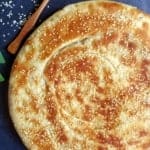
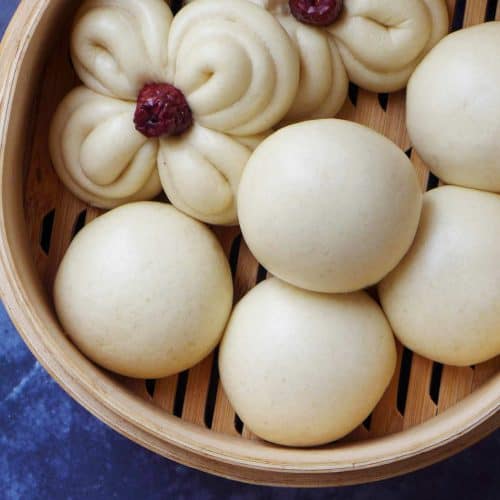

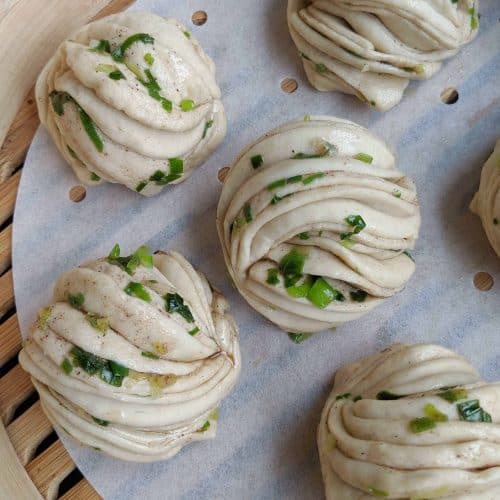
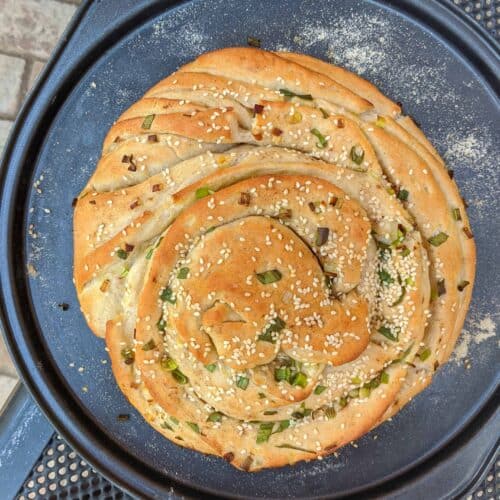
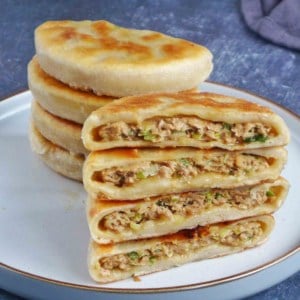
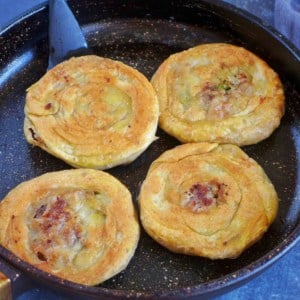
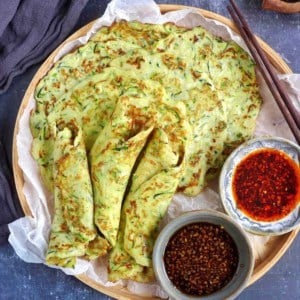
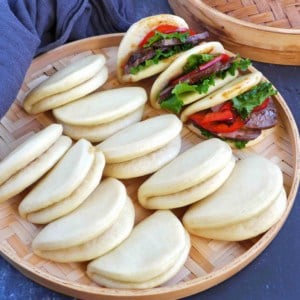
describe in very detail and easy to understand.Excellent
Hi. Your recipe says 500g or 4 cups flour. When I convert 500g flour to cups it comes out to 3 cups + 2 TBsp. So…should I be using 500g or should I be using 4 cups? Help please! 🙂 Thank you.
Hi Kate! Please use 500g. Measuring by weight is much more accurate than by cups. If you wish to measure flour with a cup, you’ll need to sift the flour first. I guess you have put unsifted flour into the cup. That’s why it turned out to be less than 4 cups. Hope this helps.
Tried this recipe for the first time and it was super yummy! I had no issues proofing the dough twice but found that the final product lacked the fluffy bread like texture yours has. Any tips on how I can improve?
Sometimes over proofing can cause the problem. Also, use a thick pan and cook over low heat. It allows more cooking time thus the dough rises a little further.
Hi Wei,
Thanks so much for the recipe! I tried this recipe and my bread cracked as it was cooking. It was also difficult to transfer the bread to the pan because it was so sticky and flimsy. Do you have any suggestions on what I should do next time?
Hi Annie! I think you need to adjust slightly the water flour ratio (it varies depending on the brand of the flour and how you measure it). The finished dough should be soft but not sticky. I suggest you add a little more flour next time.
I left it in the fridge to rise overnight.
It resulted in a very very nice dough and fluffy outcome.
How might I make it more savoury though?
It’s a great idea to leave the dough to rise overnight in the fridge. To make it more savoury, you can add a bit of salt to the dough mix and/or increase the amount of salt that you sprinkle on the flattened dough. Hope this is helpful. Happy cooking!
Was the water supposed to be a little more? I had a hard time mixing the flour and water; it was really dry. The first rise process didn’t go very well; the dough didn’t rise high enough somehow. The flatbread was still tasty in the end though. Thanks for uploading this recipe! One suggestion: would it be possible to have the suggested serving information at the top of the recipe? It would have been helpful in my case as I was cooking food for a party. Thanks.
Hi Zhien! As I mentioned in the recipe note No. 2, the flour water ratio may vary depending on the brand of the flour and how you measure it. The kneaded dough should be soft and elastic, so if you feel it too dry, add a bit more water next time.
Normally, I do leave the serving information at the top of the recipe. For this particular one, I found it difficult to calculate since it depends on how you served it and how many other dishes available for the meal. Anyway, thanks for your suggestion. I will think about it.